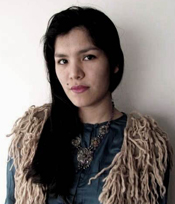Check out the new group “Random Acts of Harassment”
Once again there have been a lot of really good street harassment articles lately. Here is a sampling:
“Colette walked down the Kasr El-Nil bridge, secretly recording with an iPhone. She held it by her mouth with headphones plugged in and pretended to talk on the phone. She pretended to be deep in conversation, looking straight ahead of her. Whenever she felt eyes on her, she turned the phone slightly towards them. The clip was filmed in a single 5 minute walk around sunset, as people often gather on the bridge after the temperature cools down.”
“I’m Polite, Middle-Class and Harassed By Police. Here’s Why.” American Prospect
“If we were really trying to do something about diversity and inclusion why wouldn’t you start young? Why not include diversity as a core part of the early learning curriculum?
After the police killings of Eric Garner on Staten Island, New York, and Michael Brown in Ferguson, Missouri, people have been talking again about diversity training for police officers. That may soothe the public’s perception of the problem, but that won’t solve the problem of police profiling of non-whites.
Teaching these principles to children while they are young might counteract negative beliefs. We try earnestly to believe now that it doesn’t, but these recent reports of police brutality show that we have yet to gain that gold star. If children are given the space in school to properly navigate diversity within the peers that they interact with, we might finally have a chance at building that post-racial society.”
“One Woman’s Lessons from Living on the Streets.” NPR
“Lesson One: Don’t Look Like A Woman
“It’s not easy to be a woman on the streets, OK?” Susan says. “We tend to hide our features. In other words, we will wear more than one sweatshirt to look more like a man than a woman.”
When darkness falls, Susan pulls out her dark and bulky clothes.”
“Two pieces of content from Playboy.com have been noticed by the feminist blogosphere over the last week, garnering praise from an otherwise skeptical audience. One is an article about leaked nude photos of celebrities, entitled, “Jennifer Lawrence Is Not A Thing To Be Passed Around.” The other is a flowchart demonstrating when it is acceptable for a man to cat-call a woman. (The answer: never, unless you have her consent.)…
But the company’s senior Vice President for digital content Cory Jones says the publication didn’t mean to rebrand with a feminist bent. “I never even saw that as a feminist flowchart, I saw that as a human decency flowchart,” he said in a phone interview. “Like, guys, don’t be jerks. Stop yelling at women on the street. It’s kind of depressing that that’s the state of feminism, that we say don’t yell at women on the street and that’s considered feminism.”…
But there’s historical — and current — skepticism over whether Playboy can successfully bridge the barrier between sexualizing women and empowering them, and it’s still really unclear whether Playboy.com can become a site that overcomes the jokes about being read ‘for the articles’ and actually be, well, read for the articles. FORCE’s Rebecca Nagle thinks that one thing that would help is if the magazine continued on its current trajectory and really embraced women’s empowerment — not just how it’s defined by men.”
“For students who choose residence off campus, street harassment might be the final frontier of a still-skewed sexual climate at Yale. Because the issue typically flares up beyond campus boundaries, it’s easy to excuse this kind of activity as not within University jurisdiction or concern. But many Yalies do engage with the surrounding neighborhood; of those who don’t, few make it through four years without a Stop and Shop run or dinner at Sally’s Apizza. Street harassment is essentially an issue of a woman’s ability — or inability — to comfortably navigate the campus area. That makes it a Yale issue….
Yale still has a long way to go in repairing our own sexual climate, and the relationship between Yale and the New Haven community is complicated as-is — so addressing these microaggressions around campus will be no small task. But if we intend to make real changes when it comes to the safety and comfort of women and LGBTQ students, we can’t afford to leave street harassment out of the conversation.
“In İstanbul, women have to deal with harassment on a daily basis. Men feel that it is acceptable to make comments as women pass by. On public transportation, women are stared at and made to feel uncomfortable and unsafe. They are subjected to groping hands in crowded metros, buses and trams. Walking down the street, women must deal with even more stares and comments, as well as cars that slow down as they pass, with men often hanging out of their car windows to make insulting, indecent and sexist comments.”
“Stella Hart, a student at Drake University in Des Moines, was walking to class in 2010 when someone leaned out of their car and yelled something at her.
‘I don’t remember what they said, but I remember feeling really threatened by that and uncomfortable,’ said Hart, now an Iowa City resident.
She called her mom, who told her to take it as a compliment. But Hart couldn’t understand how a compliment ‘could feel so awful.’
After hearing countless stories from friends with similar encounters, the 24-year-old said she wants to do something about it. Hart has organized an ‘End Street Harassment in Iowa City’ forum on Sept. 3 at the Iowa City Public Library where people can come to share their experiences with harassment.” More.
“This week, two teenage girls in Haryana, Nikita and Madhu, committed suicide by consuming poison.
Venue – their coaching class [in India].
Reason – they were being stalked.
The stalkers? – Some young men of the vicinity who were following them ( on two wheelers, at times), as they left the coaching class.
Action taken – some boys have been arrested now, after the suicides”
“Sometimes it’s hard for even the most empathetic of men to understand the level of street harassment most women face. So if you ever need to explain it to someone, this comic may come in handy.
Ursa Eyer, an artist based in New Orleans, was inspired to create a piece about catcalling after she had a particularly frustrating exchange with a male peer.

“I made this comic in response to a conversation with a young man I met at a party,” Eyer told The Huffington Post in an email. “We ended up having the same conversation I’ve had a hundred times over, part of which includes the detriment of catcalling… I was inspired to illustrate my personal history of catcalling to show what it actually looks and feels like to someone who may have never experienced it before.”
University of Hamburg:
“Awesome Comebacks to Street Harassment” (In German)
Open letter to the gaming community
“We believe that everyone, no matter what gender, sexual orientation, ethnicity, religion or disability has the right to play games, criticize games and make games without getting harassed or threatened. It is the diversity of our community that allows games to flourish.
If you see threats of violence or harm in comments on Steam, YouTube, Twitch, Twitter, Facebook or reddit, please take a minute to report them on the respective sites.
If you see hateful, harassing speech, take a public stand against it and make the gaming community a more enjoyable space to be in.”















